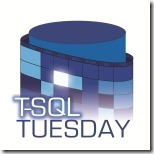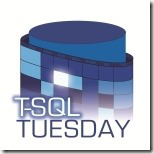
Hi folks. It’s been a minute. Frankly it’s been a rough 5 months. On the career front, I’m faced with the challenge of virtualizing our core business-critical SQL instances with minimal downtime. And, because of personal/life stuff, it’s been difficult to stay focused and productive.
So this #tsql2sday‘s topic is poignant, I suppose — this analogy of “dipping into the cookie jar”. What events or accomplishments can I take sustenance from, draw strength from, during these times?
As usual, we must thank our host, Shane O’Neill (b|t), and remind readers to check out tsqltuesday.com.
Encouragement
Back when I first took this current job, I was worried sick about doing the commute every day. One and a half to two hours in traffic each way. Even if I used toll-roads, it might save 10-15 minutes, but it was still super stressful. But my family never stopped encouraging me, telling me it would pay off. And, when the time was right, I should have the telecommute/remote-work conversation with management.
And of course, to nobody’s surprise, they were right. I now work from home 4 days a week, take a vanpool the 5th day, and am much happier and more productive (in general!), much less stressed, and a markedly better driver.
Accomplishment
One of the first big projects on my plate was upgrading & migrating the SQL 2005 instances to new hardware and SQL 2016. We didn’t use anything super fancy for the actual migration, just backup shipping, essentially. DbaTools came in very handy for copying over the logins/users without having to hash/unhash passwords. The main hiccups were around Agent Jobs and Replication. Jobs were turned off at the old server before they were enabled on the new, but due to lack of documentation and understanding of some, it became difficult to see which ones were critically needed “now” vs. which could wait a while, and which may have dependencies on other SQL instances (via linked-servers) that may or may not have moved.
And replication is just a PITA in general. Fortunately, I took this as a ‘growth opportunity’ to more fully document and understand the replication environment we were dealing with. So at the end of the project, we had a full list of replication pub-subs with their articles, a sense of how long they each took to re-initialize, and a decision-process to consult when adding-to or updating articles within them.
Continuous Learning
A similar upgrade-migration project came to fruition in 2017: the ERP system upgrade. This was a delicious combo meal of both the database instance upgrade (SQL 2008R2 to 2016) and the application & related services/middleware (Dynamics NAV 2009 to 2017). And as I blogged about, it came with a super sticky horrible side-effect that we’re still dealing with over a year later: a different collation than the rest of our DB environment.
Which reminds me, I need to do some follow-up posts to that. Briefly, the “best” band-aids so far have been thus:
- If only dealing with the ERP entities, without joins to other DBs, just leave collations alone. The presentation layer won’t care (whether that SSRS or a .NET app).
- If relating (joining) ERP entities to other DB entities, I’ll load the ERP data into temp-tables that use the other DB’s collation, then join to those temp-tables. The “conversion” is essentially ‘free on write’, meaning when we load the weird-collation data into a temp-table that’s using the normal-collation, there’s no penalty for it.
As I said, I’ll try to dive into this more in a future post. It’s been a life-saver for performance problems that cropped up as a result of the upgrade & the different collations.
But the point here is that, even though this project didn’t end up as wildly successful as we’d hoped, it’s still a success, because we learned some key lessons and were able to pivot effectively to address the problems in a reasonable way. And frankly, there was no going back anyway; it’s not like the business would have said “Oh, never mind, we’ll just stick with the old versions of everything” (even though some reticent managers would probably have enjoyed that!). So even when things seem bleak, there’s always a way around.

Conclusion
I’m still trying to be the very best DBA & BI-Dev I can, supporting the dozens of requests & projects that the business throws at us. Fortunately, with the incredible SQL Community, a wonderfully supportive family, and a fantastic team of colleagues, I remember how far I’ve come, on whose shoulders I stand, and how much promise the future holds.



